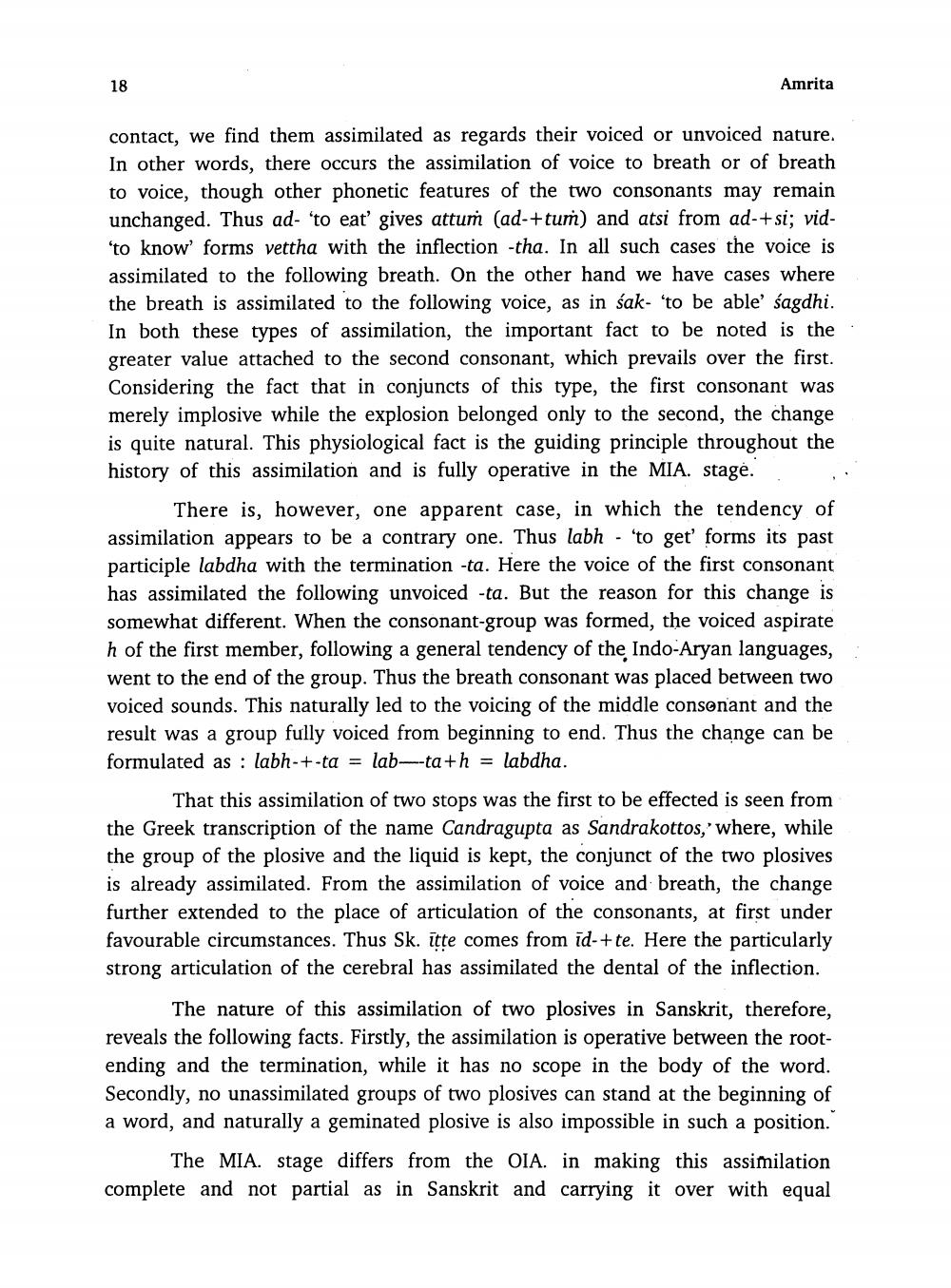________________
18
Amrita
contact, we find them assimilated as regards their voiced or unvoiced nature. In other words, there occurs the assimilation of voice to breath or of breath to voice, though other phonetic features of the two consonants may remain
nchanged. Thus ad- 'to eat' gives attur (ad-+tum) and atsi from ad-+si; vid'to know forms vettha with the inflection -tha. In all such cases the voice is assimilated to the following breath. On the other hand we have cases where the breath is assimilated to the following voice, as in sak- 'to be able' sagdhi. In both these types of assimilation, the important fact to be noted is the greater value attached to the second consonant, which prevails over the first. Considering the fact that in conjuncts of this type, the first consonant was merely implosive while the explosion belonged only to the second, the change is quite natural. This physiological fact is the guiding principle throughout the history of this assimilation and is fully operative in the MIA. stage.
There is, however, one apparent case, in which the tendency of assimilation appears to be a contrary one. Thus labh - 'to get' forms its past participle labdha with the termination -ta. Here the voice of the first consonant has assimilated the following unvoiced -ta. But the reason for this change is somewhat different. When the consonant-group was formed, the voiced aspirate h of the first member, following a general tendency of the Indo-Aryan languages, went to the end of the group. Thus the breath consonant was placed between two voiced sounds. This naturally led to the voicing of the middle consonant and the result was a group fully voiced from beginning to end. Thus the change can be formulated as : labh-+-ta = lab--ta+h = labdha.
That this assimilation of two stops was the first to be effected is seen from the Greek transcription of the name Candragupta as Sandrakottos,' where, while the group of the plosive and the liquid is kept, the conjunct of the two plosives is already assimilated. From the assimilation of voice and breath, the change further extended to the place of articulation of the consonants, at first under favourable circumstances. Thus Sk. ītte comes from id-+te. Here the particularly strong articulation of the cerebral has assimilated the dental of the inflection.
The nature of this assimilation of two plosives in Sanskrit, therefore, reveals the following facts. Firstly, the assimilation is operative between the rootending and the termination, while it has no scope in the body of the word. Secondly, no unassimilated groups of two plosives can stand at the beginning of a word, and naturally a geminated plosive is also impossible in such a position.
The MIA. stage differs from the OIA. in making this assimilation complete and not partial as in Sanskrit and carrying it over with equal




